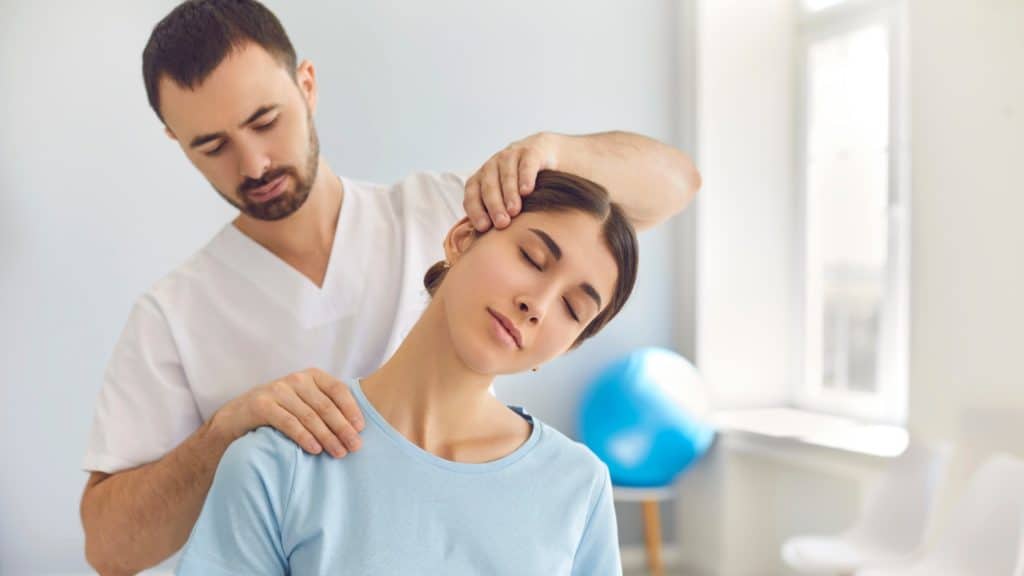Approximately 12% of all Americans — nearly 40 million people — get migraine headaches, according to the National Institutes of Health. Many people also experience tension headaches and cluster headaches, which cause debilitating pain and other symptoms. When all is said and done, headaches impact 40% of the American population in some way, making them one of the most common health problems among adults.
Over-the-counter and prescription medications are often used to treat headache pain, but they're not always effective. Some medications even cause serious side effects, such as an increased risk of GI bleeding or liver damage. If you're hesitant to try medications or you've already tried headache medications without success, chiropractic care may be able to help.
What Are Migraines?

A migraine is a neurological condition characterized by headaches, increased light sensitivity and sensitivity to certain smells or sounds. The pain associated with migraine headaches is usually limited to one side of the head, and many people describe it as a throbbing sensation. A migraine typically develops in four phases:
- Prodrome: The prodrome phase lasts anywhere from a few hours to a few days. During this phase, migraine sufferers may experience fatigue, nausea, food cravings, difficulty concentrating and other symptoms.
- Aura: If the aura phase occurs, which it only does in about 15% to 20% of people with migraines, it may cause numbness, tingling, ringing in the ears, temporary loss of vision or blind spots in your vision. Some people report seeing flashing lights or wavy lines during the aura phase. Aura typically lasts from five minutes to one hour.
- Headache: This is the main symptom of a migraine. The pain may begin on one side of the head and move to the other side over time. Migraine headaches may last up to 72 hours.
- Postdrome: The postdrome phase is known as the "migraine hangover" because it takes a day or two to recover from the migraine. During this phase, people with migraines may feel fatigued or depressed, have difficulty concentrating or have trouble understanding things. Some even report feeling euphoric after the migraine headache passes.
What Are Common Triggers for Migraines?

Researchers believe that migraines are caused by genetic or environmental factors. Although it isn't clear exactly what causes this neurological disorder, there are several triggers associated with the onset of a migraine headache.
- Stress: About 70% of people with migraines report that high levels of stress tend to trigger their symptoms.
- Hormonal changes: Migraines are more common in women than in men, which might be explained by the hormonal changes that occur during the menstrual cycle. Up to 75% of female migraine sufferers report that they experience attacks just before or during their menstrual periods.
- Poor sleep: Sleeping too much, not getting enough sleep and maintaining an irregular sleep schedule have all been associated with migraine headaches.
- Alcohol use: Some people with migraines report that their symptoms are worse after they consume alcohol, especially if they drink red wine.
- Dietary habits: Preservatives, artificial sweeteners and salty foods have been known to make migraine symptoms worse in some individuals.
- Weather: In some cases, migraine symptoms worsen with changes in the barometric pressure, severe storms or extreme levels of heat.
- Smells: Strong smells, such as perfumes, gasoline or chemicals, can trigger migraine symptoms.
When to See a Doctor for a Migraine

If you suffer from migraines consistently, it's important to discuss your symptoms with a medical professional, such as a chiropractor or primary care physician. Cedars-Sinai Hospital recommends seeking immediate medical attention if you're experiencing the worst headache of your life, since this may be the sign of a serious medical condition.
Can a Chiropractor Treat Migraines?

A skilled chiropractor can help relieve the symptoms of migraines and other types of headaches, usually through manual therapies like spinal manipulation, massage and other techniques. Chiropractic care is also helpful for treating tension headaches and cervicogenic headaches. Tension headaches typically occur once or twice per month and cause steady pain on both sides of the head. Unlike migraines, tension headaches don't cause nausea, light sensitivity or sensitivity to certain sounds or smells. Cervicogenic headaches originate in the neck, but the pain they cause radiates to the head.
Depending on the severity of your migraine headaches and the symptoms you experience, a chiropractor may recommend soft tissue therapy, spinal manipulation, lifestyle changes and/or acupuncture. Soft tissue therapy may include massage, taping or manual resistance techniques to address issues with the muscles, ligaments, tendons and connective tissues of the body. Spinal manipulation involves applying limited force to one of the spine’s joints. This type of treatment may be as effective as preventive medications for reducing the frequency of migraine headaches.
Lifestyle changes are important because they can help limit your exposure to some of the triggers known to make migraine symptoms worse. If your symptoms worsen after drinking alcohol, for example, a chiropractor may recommend that you reduce your alcohol consumption or eliminate alcohol use entirely. Acupuncture is the insertion of small needles at points believed to be responsible for triggering headaches. These points lie along meridians, or pathways that help energy flow through the body. According to the principles of Traditional Chinese Medicine, headaches and other symptoms occur when this energy flow is disrupted in some way.
Frequently Asked Questions

Is a Chiropractor Good for Migraines?
Depending on the frequency of your migraines and the severity of your symptoms, a skilled chiropractor may be able to use a variety of techniques to relieve pain and reduce the number of migraines you have each month. Chiropractors are also helpful for addressing tension headaches and cervicogenic headaches, both of which cause pain and make it difficult to concentrate.
Can Spinal Misalignment Cause Migraines?
Spinal misalignment, especially in the cervical spine, can cause migraines and other types of headaches by irritating some of the nerves that supply the head, neck and face. A chiropractor helps with spinal misalignment by performing adjustments to reduce inflammation.
Is Massage or Chiropractor Better for Migraines?
Massage is one of the techniques used by chiropractors, so one isn't better than the other. They're often used together to relieve migraine pain and prevent migraine attacks from occurring.
Does Acupuncture Work for Migraines?
Acupuncture is highly effective for migraines and other types of headaches. In a systematic review of nearly two dozen clinical trials, researchers discovered that 59% of individuals receiving acupuncture reported that the treatment cut the number of migraines they had by at least half. The review also showed that acupuncture reduces migraine frequency better than prescription medications used to prevent migraine symptoms.
Does Chiropractic Care Treat Other Types of Headaches?
Chiropractors treat many types of headaches, including tension headaches, cluster headaches and cervicogenic headaches. Tension headaches and cluster headaches are classified as primary headaches, or headaches that aren't a symptom of an underlying medical condition. In contrast, cervicogenic headaches are classified as secondary headaches. They only occur because there's a problem somewhere in the cervical spine. A skilled chiropractor has the knowledge and expertise required to determine the cause of a headache and provide appropriate chiropractic treatment, easing pain and allowing you to return to your normal activities as quickly as possible.
Stop Headache Pain in Its Tracks

Migraines and other types of headaches result in thousands of lost work days each year. They can also make it difficult to drive, spend time with loved ones and do things around the house. The skilled professionals at Northeast Spine and Sports Medicine are ready to listen to your concerns and develop a custom treatment plan that may include chiropractic care, acupuncture or physical therapy to help you find migraine relief. To learn more about your treatment options, call (732) 653-1000 or book an appointment on our website.


